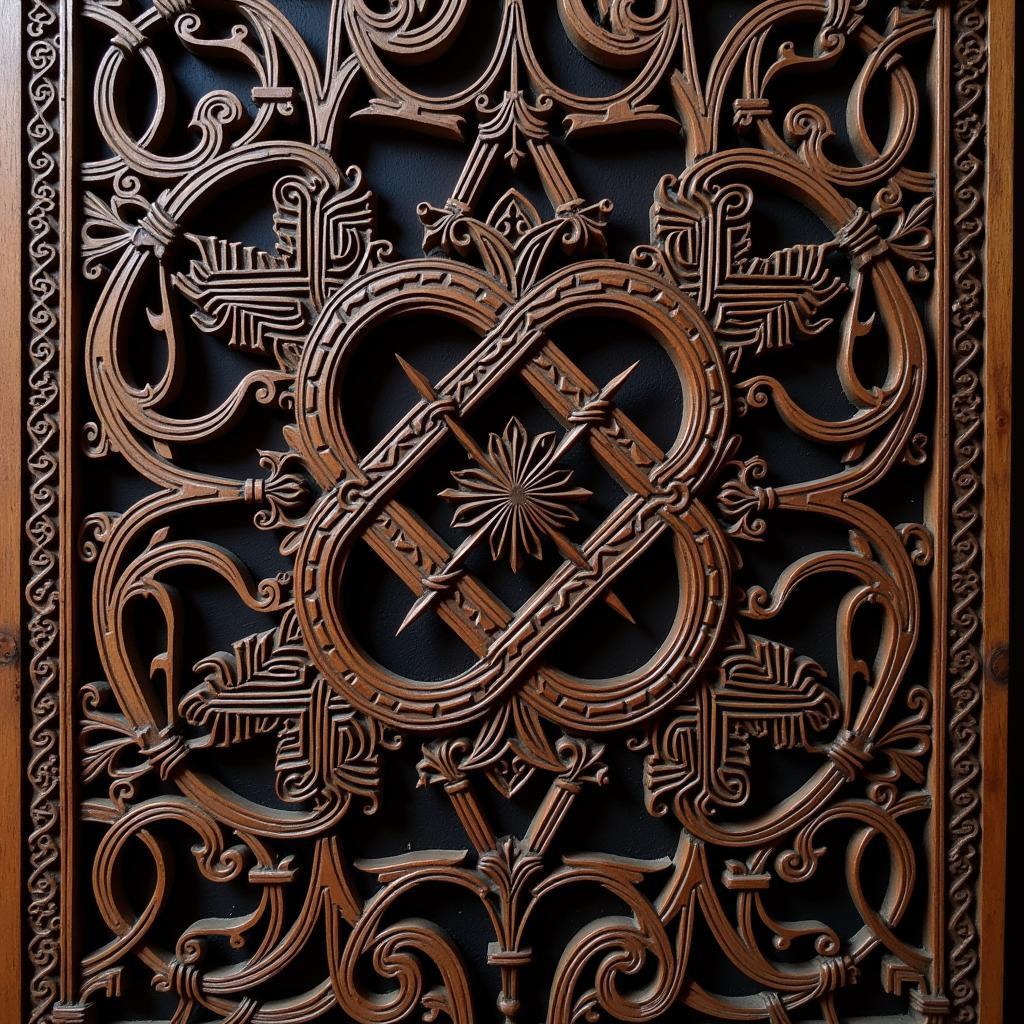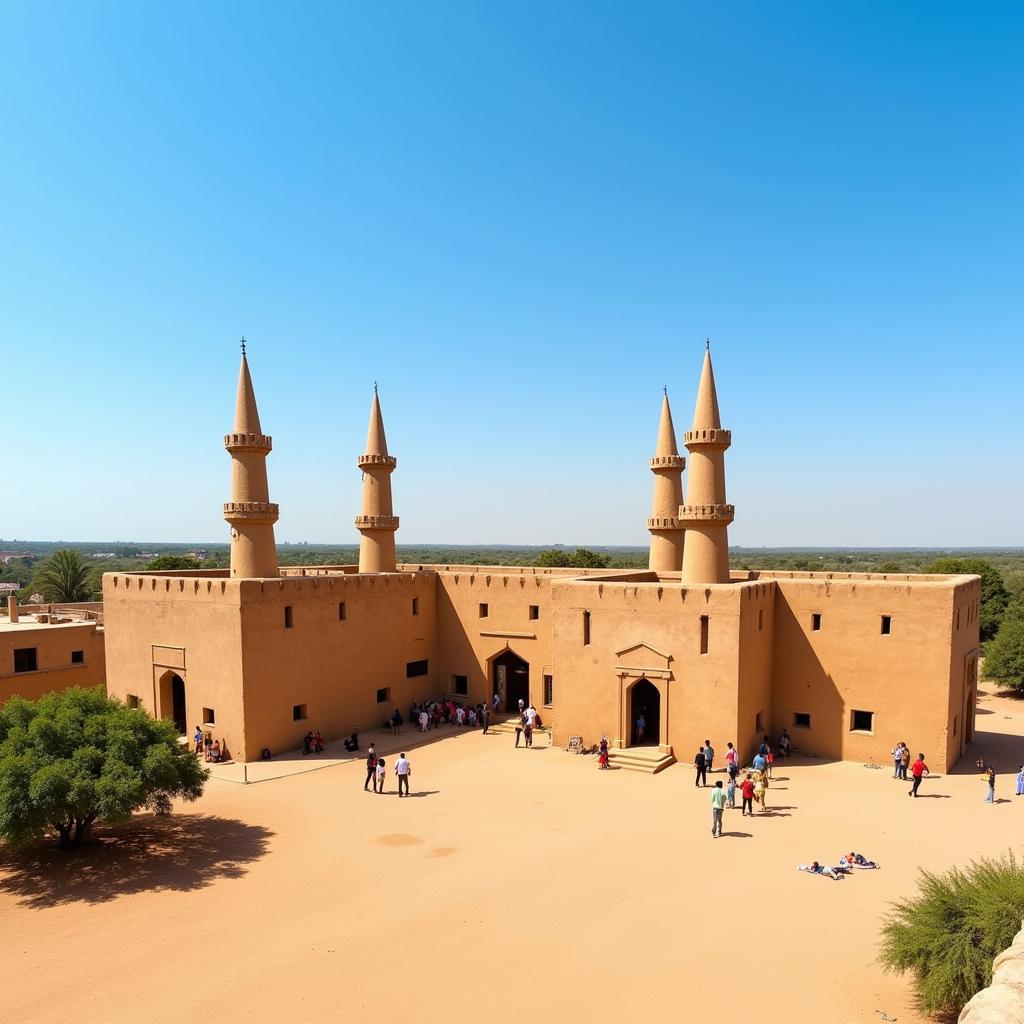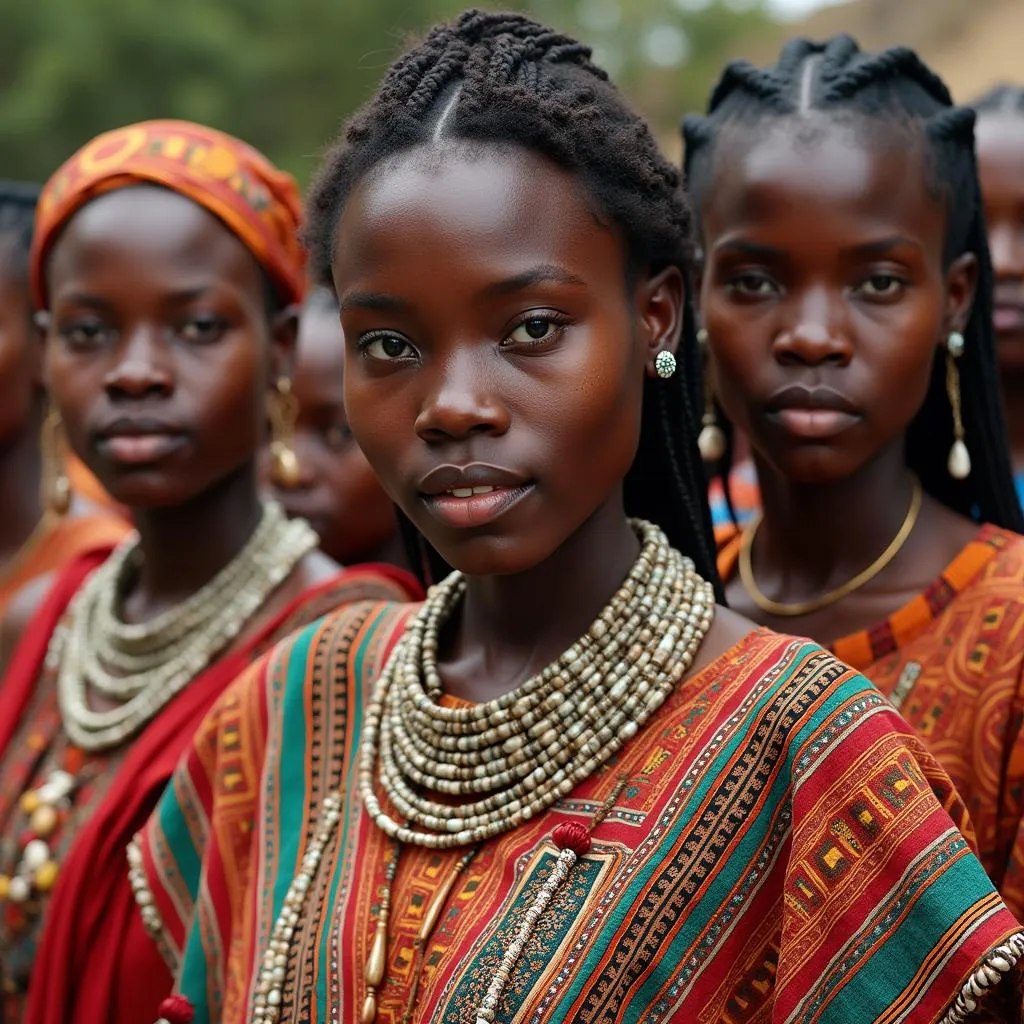Exploring the Rich Tapestry of African Islamic Art
African Islamic Art is a vibrant and diverse field, reflecting the deep integration of Islamic faith and culture across the African continent. From intricate calligraphy and geometric patterns to stunning architecture and vibrant textiles, this unique art form tells a story of faith, history, and cultural exchange. african history and religion essay This article delves into the fascinating world of African Islamic art, exploring its various expressions, influences, and significance.
Islamic art in Africa isn’t monolithic; it’s a rich tapestry woven from diverse cultural threads. Its forms vary significantly across regions, influenced by pre-existing artistic traditions and local materials. For instance, West African mosques often feature distinctive pyramidal or conical minarets constructed from mud or earth, a stark contrast to the ornate domes and slender minarets seen in North Africa. Similarly, calligraphy, a central element in Islamic art, adapts to local languages and scripts, showcasing the adaptability and dynamism of this art form.
The Influence of Islam on Traditional African Art Forms
The arrival of Islam in Africa didn’t erase existing artistic traditions; rather, it fostered a dynamic interplay between Islamic aesthetics and indigenous practices. Many traditional African art forms, such as woodcarving, pottery, and textile weaving, were infused with Islamic motifs and principles. Geometric patterns, arabesques, and calligraphic inscriptions became integrated into everyday objects, reflecting the pervasiveness of Islamic influence.
 African Woodcarving with Islamic Geometric Patterns
African Woodcarving with Islamic Geometric Patterns
This fusion of Islamic and African elements resulted in unique artistic expressions. For example, in East Africa, Swahili architecture incorporates coral stone carvings adorned with Islamic inscriptions and geometric designs, demonstrating a harmonious blend of local materials and Islamic artistry. Similarly, West African textiles, renowned for their vibrant colors and bold patterns, began to incorporate Islamic calligraphy and geometric motifs, creating a distinct visual language.
Key Features of African Islamic Art
What distinguishes African Islamic art? Several key features characterize this art form. Calligraphy, often featuring verses from the Quran, holds a prominent place. Geometric patterns, symbolizing the infinite nature of God, are also ubiquitous. Furthermore, the aniconism prevalent in Islamic art led to a focus on abstract forms and decorative motifs, inspiring innovative artistic solutions.
Calligraphy and Geometric Design in African Islamic Art
Calligraphy and geometric design are cornerstones of African Islamic art. These elements are not merely decorative; they carry deep spiritual and symbolic meaning. Calligraphy, often considered the most revered form of Islamic art, serves as a visual representation of the divine word. Geometric patterns, with their intricate interlacing and repeating motifs, evoke a sense of order and harmony, reflecting the underlying principles of Islamic cosmology.
Dr. Fatima Mbaye, a renowned scholar of West African art, notes, “Islamic calligraphy in Africa isn’t just about writing; it’s a spiritual practice, a way of connecting with the divine.”
Architecture and Mosques in the African Islamic Tradition
Mosques, central to Islamic religious life, stand as powerful symbols of faith and community. Across Africa, mosques exhibit a diverse range of architectural styles, reflecting local traditions and environmental conditions. From the majestic mud-brick mosques of Mali to the ornate stone mosques of North Africa, these sacred spaces demonstrate the adaptability and creativity of African Islamic architecture. african arab business man muslim
 West African Mud-Brick Mosque with Minarets
West African Mud-Brick Mosque with Minarets
Professor Abdallah Omar, an expert in Swahili architecture, observes, “African mosques are more than just places of worship; they are social hubs, centers of learning, and expressions of cultural identity.”
Conclusion: The Enduring Legacy of African Islamic Art
African Islamic art is a testament to the enduring power of cultural exchange and artistic innovation. By blending Islamic aesthetics with indigenous traditions, African artists have created a unique and vibrant artistic heritage. From the intricate calligraphy adorning manuscripts to the majestic architecture of mosques, African Islamic art continues to inspire and captivate, offering a glimpse into the rich tapestry of African cultures. african costumes images Exploring this art form deepens our understanding of both Islamic history and the diverse cultures of the African continent. african historical review
FAQ
- What are some common motifs in African Islamic art?
- How has Islam influenced traditional African art forms?
- What are some examples of notable African Islamic architecture?
- Where can I learn more about African Islamic art?
- What is the significance of calligraphy in African Islamic art?
- How does African Islamic art differ from other forms of Islamic art?
- What are some contemporary examples of African Islamic art?
What other questions do you have about African art, history or religion? Explore more about African traditions and culture on our site.
When you need assistance, please contact us at Phone Number: +255768904061, Email: [email protected] Or visit us at: Mbarali DC Mawindi, Kangaga, Tanzania. We have a 24/7 customer service team.

